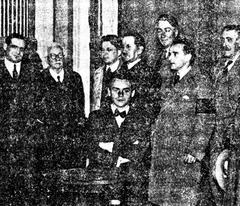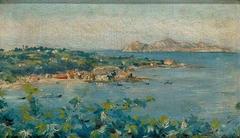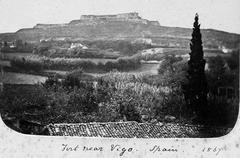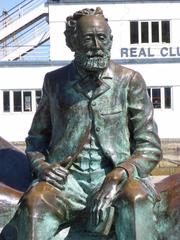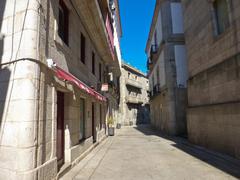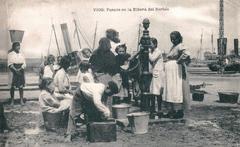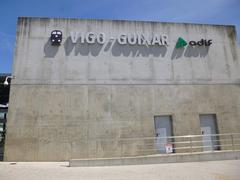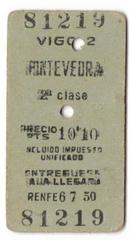Pazo da Pastora Visiting Guide: Vigo, Spain
Date: 04/07/2025
Introduction
Pazo da Pastora is an iconic manor house nestled in Vigo, Galicia, Spain. Renowned for its rich historical legacy and architectural significance, it stands as a symbol of Galician noble heritage. This comprehensive guide provides detailed information on the history, architecture, cultural importance, visiting hours, ticketing, accessibility, and nearby attractions of Pazo da Pastora. Whether you are a history enthusiast, architecture lover, or cultural traveler, this guide will help you plan a memorable visit.
For official updates and in-depth cultural insights, refer to Turismo de Vigo and Patrimonio Galego.
Table of Contents
- Introduction
- Historical Background and Significance
- Architectural Features
- Cultural and Local Importance
- Visiting Information: Hours, Tickets, Accessibility
- What to See During Your Visit
- Nearby Attractions
- Visuals and Media
- FAQs
- Summary and Visitor Tips
- References
Historical Background and Significance
Pazo da Pastora, originally known as Torre de Busteu and later as Pazo de San Tomé (or Santhomé), traces its origins to the 14th century. Initially constructed as a defensive fortress and noble residence, it was notably linked to Pedro Álvarez de Soutomaior (Pedro Madruga), a pivotal figure in 15th-century Galician nobility. Local legend, underpinned by theories from Alfonso Philippot, even suggests a possible connection between Madruga and Christopher Columbus, adding a layer of intrigue to the site (Turismo de Vigo, Atlántico).
Over the centuries, the estate evolved from a medieval stronghold into a Renaissance palace, reflecting changes in Galician society and architecture. The pazo’s aristocratic lineage played a vital role in Vigo’s local history, and its legacy is preserved in its architecture, gardens, and annual traditions.
Architectural Features
Pazo da Pastora’s current structure is the product of several construction phases:
- Layout: The main body is rectangular with two stories and twin square towers at each end, a hallmark of Galician manor architecture (Patrimonio Galego).
- Façade: The north-facing façade showcases classical symmetry. Its central section is whitewashed, flanked by towers, and topped with a triangular pediment above a balcony. The entrance boasts a lintelled noble coat of arms (Vigo Virtual).
- Gardens: The estate features two boxwood parterres, a small chapel, and a “peto de ánimas” (wayside shrine) at the entrance, with a painted tile of the Virgin of the Divine Shepherdess.
- Interior: While the interior is not open to the public, it is reputed to include ornate stonework, period woodwork, and preserved noble family crests.
The pazo’s layout and decorative elements influenced the design of other regional landmarks, most notably the Pazo Quiñones de León in Castrelos (Metropolitano).
Cultural and Local Importance
Designated a Bien de Interés Cultural (BIC) in 1955, Pazo da Pastora enjoys the highest level of heritage protection in Spain (Patrimonio Galego). It is the only major privately owned pazo in Vigo, with others—such as Quiñones de León and A Raposeira—now in public or institutional hands. The estate’s gardens, which once formed a continuous landscape with those of Castrelos, are a rare example of historical landscaping within an urban setting.
The entrance gate, a devotional landmark, is adorned with columns, urns, pinnacles, and two noble coats of arms. The niche with the “peto de ánimas” is a site of local veneration, where residents leave flowers and candles (Wikipedia).
Despite its private status, the pazo plays a role in community life, opening its doors annually on Palm Sunday for the Blessing of the Palms and parish festivities. This tradition draws visitors from across Vigo and underscores the estate’s enduring cultural significance (VigoÉ).
Visiting Information: Hours, Tickets, Accessibility
Location: Rúa do Conde, Santo Tomé de Freixeiro, Vigo
-
Visiting Hours:
Pazo da Pastora is generally closed to the public. It opens once a year on Palm Sunday for special festivities. Check Turismo de Vigo or local tourist offices for precise dates and times. -
Tickets:
Entry during Palm Sunday is free. There are no regular ticket sales or guided tours. -
Accessibility:
Due to its historic nature and private ownership, accessibility is limited. Some uneven terrain may be encountered in the gardens. For more accessible experiences, consider visiting public manors like Pazo Quiñones de León. -
Guided Tours:
Official guided tours are not regularly available. Local cultural associations occasionally offer information during the annual opening.
What to See During Your Visit
On the rare open day, visitors can enjoy:
- The elegant, symmetrical north façade with its noble coats of arms
- Classical boxwood parterres and lush gardens
- The small estate chapel and the “peto de ánimas” at the entrance
- The statue of Pedro Madruga/Columbus, a photo highlight near the chapel
Nearby Attractions
Combine your visit with other notable Vigo sites:
- Pazo Quiñones de León (Castrelos): Public manor with museum and French-style gardens, inspired by Pazo da Pastora (Turismo de Vigo)
- Castrelos Park: Adjacent to Quiñones de León, ideal for walks and picnics
- Vigo’s Old Town (Casco Vello): Historic quarter with vibrant culture and gastronomy
- Galician Sea Museum: Exhibiting the maritime heritage of Vigo
Visuals and Media
- Photography: The exterior and gardens can be photographed from the street year-round. Early morning or late afternoon offers the best light.
- Virtual Tours: Official websites occasionally provide photo galleries and virtual tours. Check Turismo de Vigo for updates.
- Alt Text Suggestions: Use descriptions like “Pazo da Pastora gardens and façade,” “Palm Sunday event at Pazo da Pastora,” or “Vigo historical site.”
Frequently Asked Questions (FAQs)
Q: When can I visit Pazo da Pastora?
A: During the annual Palm Sunday event. Check local tourism websites for exact dates.
Q: Is there an entrance fee?
A: Entry is free during public events; otherwise, the estate is closed.
Q: Are guided tours available?
A: Only during the annual opening, and these are informal.
Q: Is the estate accessible for visitors with disabilities?
A: Accessibility is limited due to the historic structure.
Q: Can I take photographs?
A: Yes, of the exterior and gardens. Interior photography is restricted.
Summary and Visitor Tips
Pazo da Pastora uniquely reflects the evolution of Galician noble life, from a medieval fortress to a Renaissance manor. Although regular access is restricted, the annual Palm Sunday opening provides a singular opportunity to experience its grandeur. Plan ahead, check for official event dates, and respect property boundaries. Enhance your visit by exploring nearby Vigo attractions and using the Audiala app for additional cultural content and guided experiences.
For virtual explorations and photo galleries, consult local tourism platforms (Patrimonio Galego, VigoÉ).

